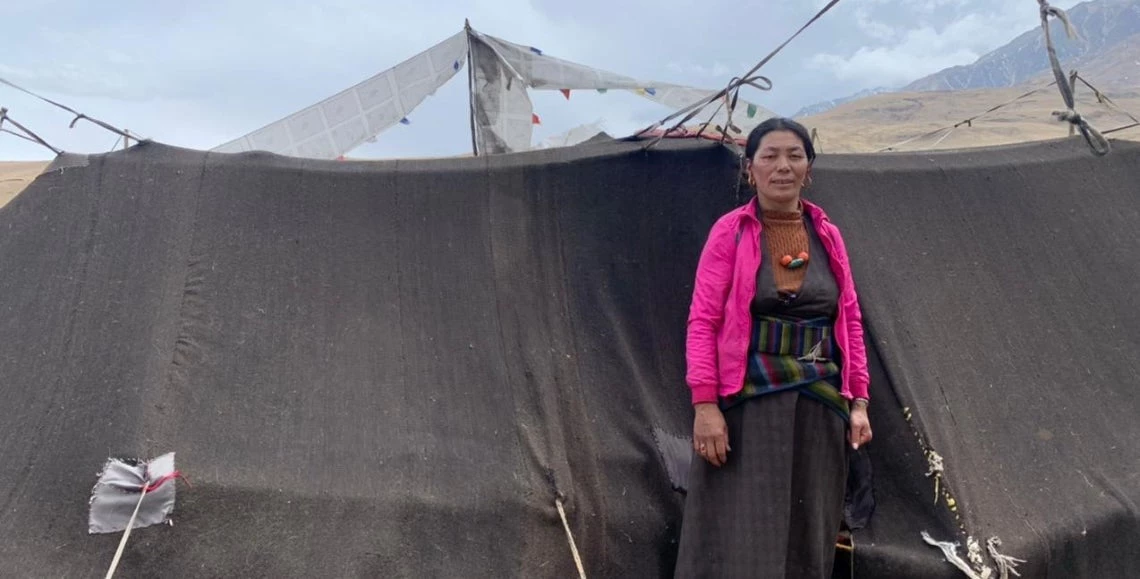 An indigenous Tharu woman from Nepal weaves a traditional basket, dhakia. Photo: Maya Rai
An indigenous Tharu woman from Nepal weaves a traditional basket, dhakia. Photo: Maya Rai
Phurbu Dolma and her family of five are nomads of Chuzung, Upper Mustang and are the few remaining indigenous nomads, known as the Drokpas. They live closely with nature, moving camp and their animals according to changing seasons. Compared to a few years ago, they now have a smaller herd of yaks due to decreasing availability of pasture for their animals and water sources. Yaks are intrinsically tied to the Drokpas as a source of food, transport, and livelihood.
The yak hair or Tsipa, a by-product of summer trims for the yaks, is woven into large tents, mats, tethering ropes, clothes, and various other household goods. Often sold to supplement the family income, these products are also bio-degradable and sustainable. Unfortunately, the indigenous knowledge and practices of weaving and working with yak hair, passed down generationally is becoming rarer by the day. The advent of changing weather patterns and local migration of the youth to urban areas could mean a permanent loss of these valuable resources, skills, and knowledge.
The advent of changing weather patterns and local migration of the youth to urban areas could mean a permanent loss of these valuable resources, skills, and knowledge.
Similar stories are repeated miles away in the southwestern plains of Nepal. Sunita Chaudhary, an indigenous Tharu woman from Dang recalls her foray into natural resource-based entrepreneurship more than a decade ago after a stint as a radio journalist. Her enterprise, Merhi Hastakala Udyog employs 15 local women where they produce dhakia, baskets made from the locally available moonj, a type of thatch grass that grows wild along riverbanks and forests. The traditional weaving skill is an integral part of Tharu culture with the dhakia used in all important social and religious functions.
But as she recalls, the challenges of setting up her enterprise were far simpler than the complex set of challenges that she and other indigenous women like her face as the planet warms, especially in the current Covid-19 pandemic. While moonj is still available, she has noticed a downturn in its availability in the wild. Increased commercialization of the material, decreasing wild spaces and haphazard urban sprawl has meant that small enterprises like hers are facing inflated raw material costs.
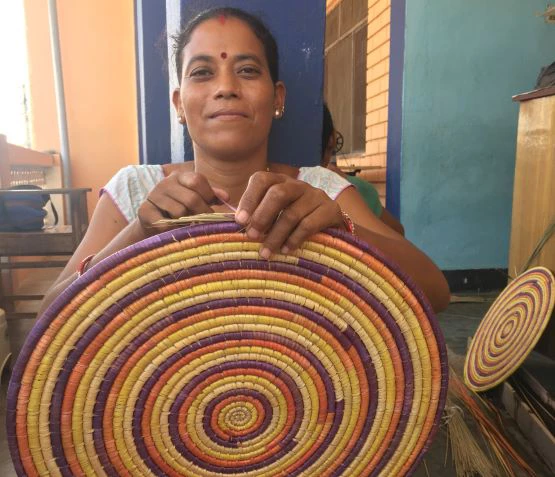
Climate change and the impact on traditional skills and livelihoods
Nepal is highly vulnerable to climate change impacts with the country’s climate vulnerabilities stemming from its physical exposure and topography, lack of livelihoods diversification, unplanned urban development, and a dearth of resilient infrastructure among other factors. Recent studies suggests Nepal faces losing 2.2% of annual GDP due to climate change by 2050.
These are stark numbers, and it is easy to forget the human stories such as Sunita’s and Phurbu's and the women from their communities. Their stories reflect the livelihoods of indigenous peoples around the world which are intimately tied to natural resources (including livestock) in specific ecosystems.
These resources are part of unique cultural identities, traditional practices and belonging. The challenges to Sunita’s enterprise and Phurbu’s skill, underscore the importance of conserving indigenous knowledge for sustaining livelihoods impacted by a complex set of factors including climate change, economic drivers, youth migration, and the COVID-19 pandemic.
The challenges to Sunita’s enterprise and Phurbu’s skill, underscore the importance of conserving indigenous knowledge for sustaining livelihoods impacted by a complex set of factors including climate change, economic drivers, youth migration, and the COVID-19 pandemic.
However, it would be erroneous to focus solely on the very real adverse and disproportionate impacts that climate change is having on the indigenous population including women. Due attention should also be drawn to their high adaptive capacity and the ability to respond to changing climactic and social contexts that have sustained indigenous practices for generations. The preservation of knowledge is crucial in ensuring the socio-economic growth of the community and the link to sustaining their natural ecosystem.
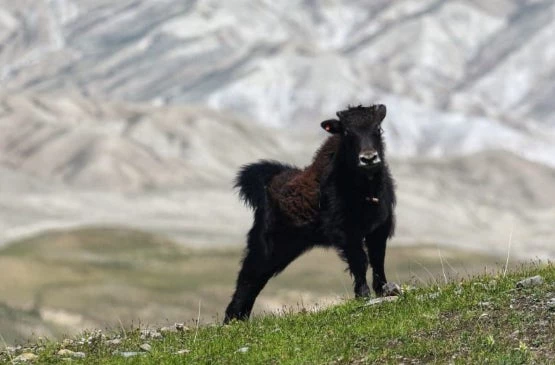
Honoring the role of indigenous knowledge in addressing climate change impacts
In Nepal, the World Bank works with Indigenous peoples and local communities (IPLC), including women in strengthening its engagement through specific projects like the Enhancing Access to Benefits while Lowering Emissions (EnABLE) and Dedicated Grant Mechanism for Indigenous Peoples and Local Communities in Nepal that support the Bank’s other forest and climate initiatives such as the Forest for Prosperity Project (FFPP), the Asia-Pacific Forest Carbon Partnership Facility (FCPF) Capacity Building Plan (CBP) on REDD+.
The World Bank projects focus on enhancing sustainable livelihoods, increasing benefits from forests and indigenous knowledge and practices, and honoring the indispensable role women play in shaping a more sustainable future.
The World Bank projects focus on enhancing sustainable livelihoods, increasing benefits from forests and indigenous knowledge and practices, and honoring the indispensable role women play in shaping a more sustainable future.
Furthermore, various targeted interventions such as the South Asia Climate Change Roadmap supports climate action in the region over the next five years across various sectors. Similarly, the Government of Nepal is working with the World Bank Group on Nepal’s Green, Resilient, and Inclusive development (GRID) approach to systematically promote resilient recovery from COVID-19 while advancing inclusive, low-carbon development that benefits all Nepali citizens, including indigenous women like Phurbu and Sunita.
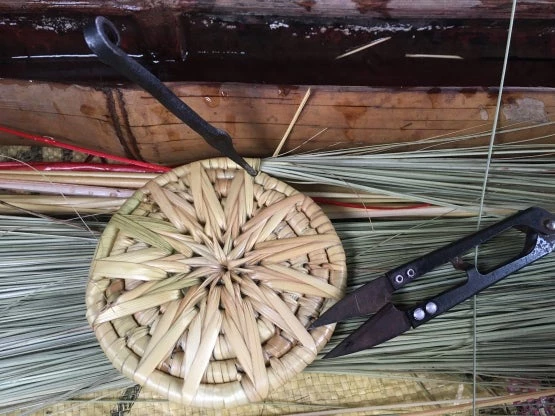



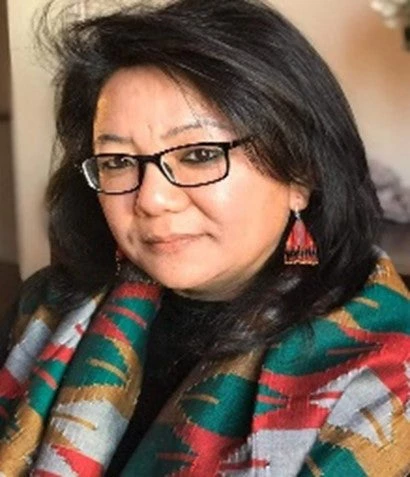
Join the Conversation